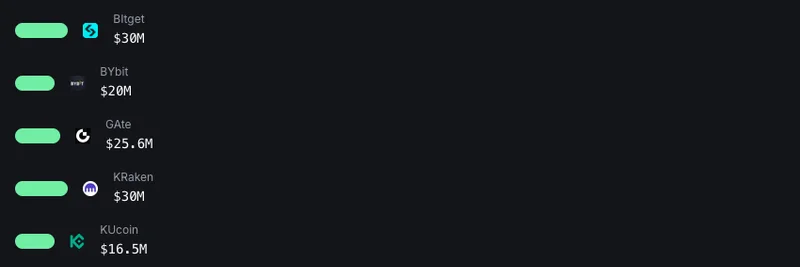Hey there, crypto enthusiasts! If you're scrolling through X (formerly Twitter) and stumbled upon a post from BSCN about Telcoin, you're in for a treat. Their recent tweet drops a bombshell of a guide on @telcoin and the $TEL ecosystem, urging everyone not to get left behind. Let's break it down in simple terms, especially if you're new to this space where telecom meets blockchain.
Why Telcoin Matters in Today's Crypto World
Imagine a world where your phone number is your bank account, and sending money across borders is as easy as texting a friend—all without hefty fees or complicated setups. That's the vision Telcoin is pushing forward. Founded back in 2017, this project isn't just another crypto; it's a bridge between massive telecom networks and decentralized finance (DeFi). With over 1.4 billion people worldwide lacking access to basic banking, Telcoin leverages mobile operators to deliver remittances, payments, and even stablecoins right to your phone.
The BSCN guide highlights how Telcoin stands out from players like Ripple or Stellar by turning mobile network operators (MNOs) into key players in a blockchain ecosystem. These operators act as validators, ensuring the network is scalable, cheap, and compliant with regulations. It's like giving telecom giants a superpower to build the "Internet of Money."
A Quick History Lesson on Telcoin
Telcoin kicked off in Singapore as an ERC-20 token on Ethereum, zeroing in on the whopping $700 billion remittances market. By 2020, they had integrations in over 20 countries, keeping fees below 2%—a steal compared to the 6-10% charged by traditional services. Fast forward to 2023, a security hiccup paused things, but they bounced back stronger with enhanced audits and SOC 2 certification by mid-2025. Now, they're evolving into a full-fledged digital banking platform, all while staying regulated.
Key Features That Make Telcoin Shine
At its core, Telcoin offers a wallet that's user-friendly, letting you send crypto via phone numbers to e-wallets in dozens of countries. No need for clunky wallet addresses! Then there's their DeFi suite for swaps, lending, and yield farming, all self-custodial for that true crypto freedom.
One standout is their digital cash stablecoins like eUSD, eAUD, and eCAD—backed 1:1 by real fiat and issued by banks. Plans are in the works for more like eGBP and eJPY. These stable assets mean you can make on-chain payments without worrying about crypto's wild price swings.
Tech-wise, they're on Polygon for now, delivering super-fast transactions at pennies per pop, but they're building their own Layer 1 blockchain, the Telcoin Network. This EVM-compatible beast uses MNOs in a Decentralized Physical Infrastructure Network (DePIN) setup, aiming for 1,000 transactions per second.
Security? They've got multi-sig setups, AI fraud detection, and regular audits from Certik to keep things locked down.
How Does Telcoin Actually Work?
It's a dual-network play: Polygon handles the current load for low-cost efficiency, while the Telcoin Network gears up for the big leagues. Users interact via the app—send remittances, trade on DeFi, or use stablecoins—all bridged across chains. Monthly volumes top $10 million, and with telecom partnerships like Viettel and Globe, they're reaching millions who are already on mobile networks.
Tokenomics: The $TEL Breakdown
$TEL is the utility token powering it all, with a fixed supply of 100 billion (91 billion circulating). Use it for fees, staking, remittances, and DeFi perks. Their "Stake & Refer" program lets you earn from referrals, though some folks raise eyebrows about its structure. No more tokens will be minted, and allocations support community growth, team, and liquidity.
Roadmap and What's Next
The excitement builds with their network rollout: Alpha Mainnet hit in May 2025, pilot testnet in July, and Beta Mainnet eyed for Q4. By 2026, expect full migration from Polygon. This means even more decentralization and telecom-driven validation.
The Team Behind the Magic
Led by CEO Paul Neuner, a telecom vet with 20 years under his belt, and co-founder Claude Eguienta bringing fintech chops. They've got heavy hitters like Patrick Gerhart for strategy and advisors from big telecoms. With over 50 staff focused on compliance and partnerships, they're licensed in Canada, Singapore, and 35 U.S. states—serious creds for mainstream adoption.
Market Buzz and Adoption Stats
$TEL's sitting at about $0.0016 with a $146 million market cap, up 150% from lows but still miles from its all-time high. Over 500,000 users, $50 million in remittances, and 10 million transactions show real traction. Partnerships with MTN and others are key to scaling.
If you're looking to grab some $TEL, check out KuCoin, Uniswap, or Quickswap. Store it in MetaMask or their own wallet for easy access.
In wrapping up, this BSCN tweet is a gateway to understanding how Telcoin could revolutionize finance for the underserved. Whether you're a blockchain practitioner or just curious about meme-adjacent innovations (hey, telecom memes might be the next big thing!), dive deeper into their ecosystem. Stay tuned for updates, and who knows—$TEL might just be the telecom token that changes the game.




